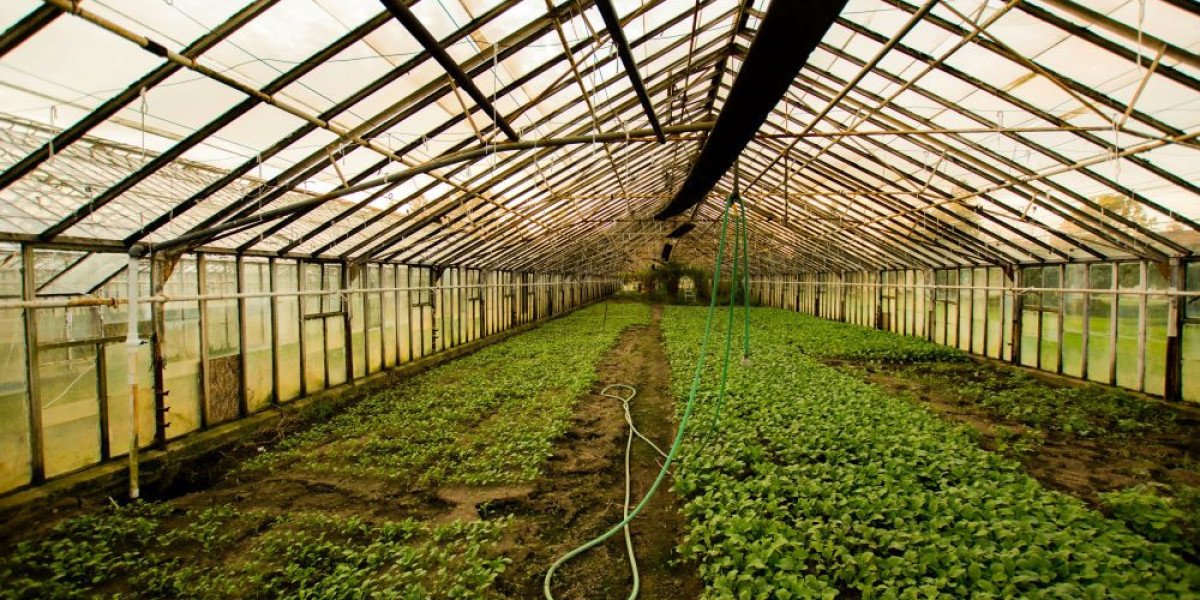Gibberellic Acid and Its Role in Agriculture
Gibberellic acid is a naturally occurring plant hormone that promotes plant growth and development. It is classified as a gibberellin, a group of hormones that regulate various aspects of plant physiology. The primary function of gibberellic acid is to stimulate cell elongation, break seed dormancy, and promote flowering and fruiting. As such, it is an essential tool for farmers looking to increase crop productivity.
In organic farming, where synthetic chemicals are avoided, plant growth regulators like gibberellic acid provide a natural and effective solution to enhance crop performance without compromising the soil's or the environment's health.
How Gibberellic Acid Benefits Organic Farming
Gibberellic acid has a wide range of benefits for organic farmers. From promoting faster growth to improving crop yield and quality, here are a few key advantages:
Enhanced Germination: Gibberellic acid can break seed dormancy, allowing seeds to germinate faster and more uniformly. This is particularly beneficial for crops with hard-to-germinate seeds or those with slow germination rates.
Increased Crop Yield: Gibberellic acid stimulates plant growth, leading to larger plants with higher yields. It helps plants grow taller, develop more branches, and produce more flowers, contributing to better harvests.
Improved Flowering and Fruit Set: Gibberellic acid can encourage flowering and fruit set in crops, particularly in plants with poor fruiting under certain conditions. This is especially useful in crops like grapes, citrus, and apples.
Better Stress Tolerance: Plants treated with gibberellic acid have shown better resistance to environmental stresses like drought or high temperatures. This is a valuable attribute, especially in areas prone to unpredictable weather patterns.
Higher Quality Crops: Gibberellic acid boosts yields and improves the quality of crops. The plants grow healthier, producing fruits and vegetables with better taste, texture, and appearance.
How to Use Gibberellic Acid in Organic Farming
Gibberellic acid should be applied with care to avoid overuse, as excessive application can lead to adverse effects such as excessive growth or poor fruit set. Farmers must follow proper dosage guidelines to ensure optimal results.
For organic farmers, the correct gibberellic acid dosage per liter is crucial. Typically, the recommended concentration for foliar application is around gibberellic acid 0.001% L. This low concentration ensures that the plant receives enough of the hormone to stimulate growth without the risk of toxicity or excessive growth.
It is recommended that gibberellic acid be combined with water for a foliar spray. This method ensures the plant absorbs the hormone efficiently. However, the timing of the application is also crucial. It is best to apply gibberellic acid during the early stages of plant growth, such as at the beginning of flowering or when plants show signs of stress.
For more information on effectively applying gibberellic acid, visit Agrigib—Gibberellic Acid 0.001% L, a product designed specifically for plant growth regulation in organic farming.
Benefits of Using Gibberellic Acid for Different Crops
Gibberellic acid is not a one-size-fits-all solution. Different crops respond to gibberellic acid in unique ways. Here are a few examples of how various crops can benefit from this growth regulator:
Fruits and Vegetables
Many fruit-bearing crops, such as grapes, tomatoes, and cucumbers, benefit from gibberellic acid application. It helps promote uniform fruit set and size, making the harvest more consistent. It also encourages the production of seedless fruits, which are precious in crops like grapes and melons.
Cereals and Grains
For cereal crops like rice, wheat, and barley, gibberellic acid increases seedling growth and improves grain filling. This results in better yields and higher-quality grains. The hormone is also helpful in controlling plant height, preventing excessive growth that can lead to lodging (plants falling over).
Flowers and Ornamentals
Gibberellic acid is widely used in the production of flowers and ornamental plants. It promotes flower formation and enhances the size and color of blooms. For organic flower growers, using gibberellic acid can lead to more vibrant, more prominent flowers with a longer shelf life.
Legumes
Legume crops like beans and peas benefit from gibberellic acid by improving germination rates and enhancing overall plant vigor. The hormone helps break seed dormancy, a common issue in legumes. Additionally, gibberellic acid promotes branching, leading to higher pod numbers and better yields.
Tips for Organic Farmers Using Gibberellic Acid
While gibberellic acid is a powerful tool for organic farmers, it must be used responsibly. Here are some key tips to maximize its effectiveness:
Follow Dosage Guidelines: As with any plant growth regulator, adhering to recommended dosage guidelines is essential. Overuse can result in undesirable growth patterns, such as elongated stems or poor fruit set.
Monitor Environmental Conditions: Gibberellic acid works best when applied under optimal conditions. Avoid applying it during extreme heat or drought, as these conditions can reduce its effectiveness.
Use in Combination with Other Organic Practices: Gibberellic acid should be part of an integrated organic farming approach. The best results will be obtained by combining its application with other practices such as crop rotation, composting, and soil health management.
Timing is Everything: The best time to apply gibberellic acid varies depending on the crop. For most crops, it is best to apply it during early plant growth or flowering. Be sure to research your crop's specific needs.
Observe Plant Response: Always monitor plants' responses after application. This will help you fine-tune the dosage and timing for future applications, ensuring you get the best possible results.
"Every plant has its rhythm, and understanding how to harmonize with that rhythm is the key to successful farming."
The Future of Gibberellic Acid in Organic Farming
Farmers increasingly turn to natural plant growth regulators like gibberellic acid to boost productivity while adhering to organic standards as the demand for organic produce continues to rise. The future of organic farming will likely see even more innovations in gibberellic acid, with ongoing research focused on improving its effectiveness and application methods.
Farmers who embrace gibberellic acid as part of their organic farming practices will have a competitive edge in the market. They will produce higher yields of quality crops that meet the growing demand for organic products.
Whether you are a seasoned organic farmer or new to the practice, gibberellic acid is a valuable tool in your arsenal. By understanding its benefits and learning how to use it properly, you can enhance your crop yields and improve the quality of your harvests while maintaining organic farming principles.
Embrace Gibberellic Acid for a Thriving Farm
As the agricultural landscape continues to evolve, organic farmers must keep up with the latest advancements in plant growth regulation. Gibberellic acid offers a sustainable solution that promotes healthy growth, better yields, and high-quality crops. By incorporating this natural growth regulator into your farming practices, you can enhance the productivity and sustainability of your organic farm, ensuring a prosperous future for both you and your crops.
 AdBlock Detectado
AdBlock Detectado








